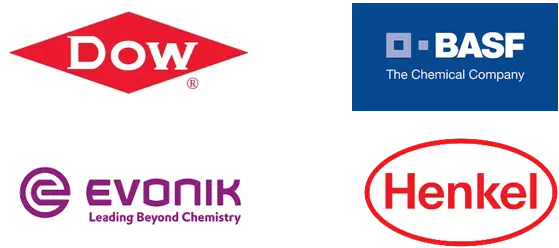Market Overview:
"The global chemical recycling market was valued at US$ 13.4 Billion in 2024 and is expected to register a CAGR of 6.6% over the forecast period and reach US$ 23.8 Billion in 2033."
|
Report Attributes |
Details |
|
Base Year |
2024 |
|
Forecast Years |
2025-2033 |
|
Historical Years |
2021-2023 |
|
Chemical Recycling Market Growth Rate (2025-2033) |
6.6% |
Chemical recycling plays a vital role in transforming plastic waste into valuable raw materials. This process breaks down plastics into molecular components, enabling creation of new plastics or other useful products. It is crucial for addressing the plastic pollution crisis and achieving circular economy goals. Chemical recycling is used in industries such as packaging, textiles, and automotive, where conventional recycling methods are limited. Factors driving demand for chemical recycling include rising awareness of plastic waste issues, stricter regulations, and growing emphasis on sustainability, as it offers a solution to recycle complex plastic waste that cannot be effectively managed by mechanical recycling.
The global chemical recycling market is registering steady revenue growth driven by alarming need to address plastic waste and achieve sustainable practices. It involves breaking down plastic waste into basic chemical components for reuse. Chemical recycling offers a solution to tackle the increasing environmental impact of plastic waste as consumption of plastics is rising.
In addition, advancements in technology are enhancing the efficiency and scalability of chemical recycling processes, which is expected to drive market revenue growth. Governments and industries are launching initiatives to promote plastic waste reduction and circular economy practices, driving market revenue growth. Compliance with regulations and standards for responsible waste management is pushing companies to explore chemical recycling as a viable solution.
Chemical Recycling Market Trends and Drivers:
Plastic Waste Crisis: Escalating plastic waste crisis and environmental concerns are compelling industries and governments to adopt sustainable waste management solutions such as chemical recycling, driving market revenue growth.
Circular Economy Adoption: Rapid shift towards an economy, where materials are reused and recycled, is driving interest in chemical recycling as a viable means to close the loop in plastic production and consumption.
Technological Advancements: Ongoing technological innovations are enhancing the efficiency and scalability of chemical recycling processes, making these more economically viable and attractive to stakeholders, thereby driving market revenue growth.
Regulatory Support: Governments across the globe are introducing regulations and policies to curb plastic waste and promote sustainable practices, encouraging businesses to invest in chemical recycling solutions to meet compliance requirements.
Industry Collaboration: Partnerships between industry players, research institutions, and governments are driving innovation and knowledge sharing, driving development and adoption of efficient chemical recycling technologies.
Chemical Recycling Market Restraints:
Complexity of Technology: Chemical recycling involves intricate processes that require advanced technology and expertise, which can create challenges in terms of implementation, operation, and cost-effectiveness.
Limited Infrastructure: Lack of widespread infrastructure for chemical recycling can hamper adoption of chemical recycling, as it necessitates specialized facilities and logistics networks for efficient waste collection and processing.
Economic Viability: Some chemical recycling methods may still be relatively expensive compared to conventional recycling or disposal methods, making it essential to ensure cost competitiveness and value proposition for stakeholders.
Regulatory Uncertainty: Evolving regulations and standards related to chemical recycling can create uncertainty for businesses, negatively impacting investment decisions and market revenue growth.
Scaling Challenges: Scaling up chemical recycling processes to handle large volumes of plastic waste can be technically challenging and may require significant investments in research, development, and infrastructure.
Public Perception and Acceptance: Public understanding and acceptance of chemical recycling methods, environmental benefits, and potential risks can lower adoption rates and hamper market revenue growth.
Chemical Recycling Market Opportunities:
Closed Loop Plastics: Chemical recycling enables the conversion of mixed or hard-to-recycle plastic waste into raw materials for new plastics production, creating a closed loop in plastic manufacturing and reducing dependency on fossil fuels.
Value Recovery from Waste: Chemical recycling unlocks the value of plastic waste by turning it into feedstock for various industries, such as packaging, textiles, and automotive, creating new revenue streams for global players from what was once considered waste.
Innovative Products: The process allows creation of high-quality recycled plastics suitable for a wide range of applications, leading to development of innovative and sustainable products that appeal to eco-conscious consumers.
Circular Economy Participation: Businesses and governments can align with circular economy principles by adopting chemical recycling, thereby improving sustainability profiles and tapping into growing consumer demand for environmentally responsible products.
Resource Conservation: By diverting plastic waste from landfills and incineration, chemical recycling is contributing to resource conservation, reduced greenhouse gas emissions, and reduced environmental impacts, providing a compelling value proposition for stakeholders.
Research and Collaboration: Investment in research, technology, and collaboration within the chemical recycling ecosystem opens doors to innovation, process optimization, and discovery of new ways to transform waste into valuable resources.
Chemical Recycling Market Segmentation:
By Technology:
- Machine Learning
- Natural Language Processing (NLP)
- Computer Vision
- Others
By Product Type:
- Polycarbonate
- Polyethylene Terephthalate (PET)
- Poly Vinyl Chloride (PVC)
- Polyurethane
- Others
By Application:
- Packaging
- Building & Construction
- Automotive
- Textiles
- Electronics
- Others
By End-Use Industry:
- Consumer Goods
- Construction
- Automotive
- Electrical & Electronics
- Textiles
- Others
Chemical Recycling Market, By Region:
North America:
- United States
- Canada
Asia Pacific:
- China
- India
- Japan
- Australia & New Zealand
- South Korea
- Association of Southeast Asian Nations (ASEAN)
- Rest of Asia Pacific
Europe:
- Germany
- The U.K.
- France
- Spain
- Italy
- Russia
- Poland
- BENELUX (Belgium, the Netherlands, Luxembourg)
- NORDIC (Norway, Sweden, Finland, Denmark)
- Rest of Europe
Latin America:
- Brazil
- Mexico
- Argentina
- Rest of Latin America
The Middle East & Africa:
- Saudi Arabia
- United Arab Emirates
- South Africa
- Egypt
- Israel
- Rest of MEA (Middle East & Africa)
The United States accounts for the largest market in the North America chemical recycling market due to significant plastic consumption rate, resulting in a considerable amount of plastic waste that requires effective management solutions. In addition, robust research and development capabilities of companies drive technological advancements in the chemical recycling sector. In addition, well-established industrial infrastructure in the countries in the region and growing awareness of sustainable practices, are encouraging investments and adoption of chemical recycling technologies. These factors collectively drive revenue growth of the chemical recycling market in North America.
In Europe, key trends driving sales of chemical recycling are stringent regulations and targets for plastic waste reduction that are prompting industries to seek innovative waste management solutions. In addition, primary factors such as rising consumer awareness and demand for sustainable products are driving manufacturers to adopt eco-friendly practices including chemical recycling and supporting revenue growth of the market in this region. Collaborative initiatives between governments, industries, and research institutions are fostering technological advancements, creating a conducive environment for increasing chemical recycling sales in Europe.
Investment in China and India is a key to revenue growth of the Asia Pacific chemical recycling market due to substantial plastic consumption in these countries, resulting in significant plastic waste volumes. In addition, commitments of these countries to address plastic pollution and promote circular economy practices are driving demand for sustainable waste management solutions. As countries in this region, including China and India, seek to reduce environmental impact, attract investments, and enhance global sustainability profiles, they offer a fertile ground for expansion of chemical recycling initiatives, driving revenue growth of the market in this region.
In Latin America, countries such as Brazil and Mexico are expected to be at the forefront of growth for chemical recycling manufacturers. Countries in this region face substantial plastic waste challenges and are actively seeking sustainable solutions. Commitment to reducing environmental impact and efforts to combat plastic pollution by governments of countries in the region is creating favorable environment for chemical recycling initiatives. With growing awareness regarding environmental concerns of using plastics among people and implementation of regulatory policies, these countries offer significant growth and expansion potential for global manufacturers to tap in the untapped market and address plastic waste issues in the region.
Leading Companies in Chemical Recycling Market & Competitive Landscape:
The global chemical recycling market features a landscape marked by presence of various major players. Companies such as Agilyx Corporation, Plastic Energy, and Renewlogy are actively engaged in developing advanced chemical recycling technologies. Collaborations, partnerships, and investments in research and development are common strategies adopted to gain a competitive edge. Moreover, industry participants are focusing on expanding their geographical presence and establishing strong supply chain networks. This competitive environment is driven by urgency to address plastic waste challenges and create a more sustainable future through innovative chemical recycling solutions.
Company List:
- Agilyx Corporation
- Plastic Energy
- Renewlogy
- GreenMantra Technologies
- Mura Technology
- Brightmark Energy
- Pyrowave
- Eastman Chemical Company
- Recycling Technologies
- TechnipFMC
- BASF SE
- Veolia
- SUEZ
- LyondellBasell Industries N.V.
- Viridor
Research Scope
|
Report Metric |
Report Details |
|
Chemical Recycling Market size available for the years |
2021-2033 |
|
Base Year |
2024 |
|
Forecast Period |
2025-2033 |
|
Compound Annual Growth Rate (CAGR) |
6.6% |
|
Segment covered |
By Technology, Product Type, Application, End-Use Industry, and Region |
|
Regions Covered |
North America: The U.S. & Canada Europe: Germany, The U.K., France, Spain, Italy, Russia, Poland, BENELUX, NORDIC, & Rest of Europe Asia Pacific: China, India, Japan, Australia & New Zealand, ASEAN, & Rest of Asia Pacific Latin America: Brazil, Mexico, Argentina, & Rest of Latin America The Middle East & Africa: Saudi Arabia, United Arab Emirates, South Africa, Egypt, Israel, and Rest of MEA |
|
Fastest Growing Country in Europe |
Germany |
|
Largest Market |
North America |
|
Key Players |
Agilyx Corporation, Plastic Energy, Renewlogy, GreenMantra Technologies, Mura Technology, Brightmark Energy, Pyrowave, Eastman Chemical Company, Recycling Technologies, TechnipFMC, BASF SE, Veolia, SUEZ, LyondellBasell Industries N.V., Viridor, and among others. |
Frequently Asked Question
What is the size of the global chemical recycling market in 2024?
The global recycled cobalt market size reached US$ 13.4 Billion in 2024.
At what CAGR will the global chemical recycling market expand?
The global chemical recycling market is expected to register a 6.6% CAGR through 2025-2033.
How big can the global chemical recycling market be by 2033?
The market is estimated to reach US$ 23.8 Billion by 2033.
What are the emerging trends observed in the global chemical recycling market?
Emerging trends in the global chemical recycling market include advancements in recycling technologies, collaborations between waste management and chemical companies, increased research and development activities, and the integration of Artificial Intelligence (AI) and data analytics for process optimization and waste stream identification.
How are government initiatives supporting revenue growth of the global chemical recycling market?
Government initiatives encompassing Extended Producer Responsibility (EPR), plastic waste reduction targets, and regulations promoting circular economy principles drive revenue growth of the global chemical recycling market. Financial incentives, grants, and policy frameworks aimed at enhancing recycling infrastructure and technology adoption also play a crucial role in driving market revenue growth.

